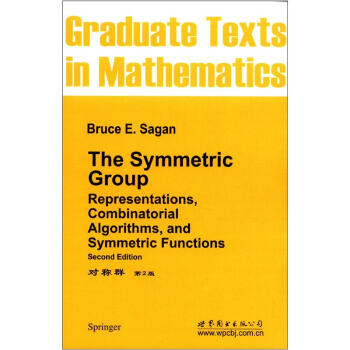![凝聚态物理学中的量子场论(第2版) [Quantum Field Theory in Condensed Matter Physics(Second Edition)]](https://pic.windowsfront.com/10104521/7151963c-1558-4b27-9ae2-dc7f2f73b67b.jpg)

具体描述
内容简介
This book is a course in modern quantum field theory as seen through the eyes of a theoristworking in condensed matter physics. It contains a gentle introduction to the subject andcan therefore be used even by graduate students. The introductory parts include a deriva-tion of the path integral representation, Feynman diagrams and elements of the theory ofmetals including a discussion of Landau Fermi liquid theory. In later chapters the discus-sion gradually turns to more advanced methods used in the theory of strongly correlatedsystems. The book contains a thorough exposition of such nonperturbative techniques as1/N-expansion, bosonization (Abelian and non-Abelian), conformal field theory and theoryof integrable systems. The book is intended for graduate students, postdoctoral associatesand independent researchers working in condensed matter physics.内页插图
目录
Preface to the first editionPreface to the second edition
Acknowledgements for the first edition
Acknowledgements for the second edition
Ⅰ Introduction to methods
1 QFT:language and goals
2 Connection between quantum and classical: path integrals
3 Definitions of correlation functions: Wicks theorem
4 Free bosonic field in an external field
5 Perturbation theory: Feynman diagrams
6 Calculation methods for diagram series: divergences and their elimination
7 Renormalization group procedures
8 O(N)-symmetric vector model below the transition point
9 Nonlinear sigma models in two dimensions: renormalization group and 1/N-expansion
10 0(3) nonlinear sigma model in the strong coupling limit
Ⅱ Fermions
11 Path integral and Wicks theorem for fermions
12 Interacting electrons: the Fermi liquid
13 Electrodynamics in metals
14 Relativistic fermions: aspects of quantum electrodynamics (1+1)-Dimensional quantum electrodynamics (Schwinger model)
15 Aharonov-Bohm effect and transmutation of statistics
The index theorem
Quantum Hall ferromagnet
Ⅲ Strongly fluctuagng spin systems
Introduction
16 Schwinger-Wigner quantization procedure: nonlinear sigma models
Continuous field theory for a ferromagnet
Continuous field theory for an antiferromagnet
17 O(3) nonlinear sigma model in (2 + 1) dimensions: the phase diagram
Topological excitations: skyrmions
18 Order from disorder
19 Jordan-Wigner transformation for spin S = 1/2 models in D = 1, 2, 3
20 Majorana representation for spin S =1/2 magnets: relationship to Z2
lattice gauge theories
21 Path integral representations for a doped antiferromagnet
N Physics in the world of one spatial dimension
Introduction
22 Model of the free bosonic massless scalar field
23 Relevant and irrelevant fields
24 Kosterlitz-Thouless transition
25 Conformal symmetry
Gaussian model in the Hamiltonian formulation
26 Virasoro algebra
Ward identities
Subalgebra sl(2)
27 Differential equations for the correlation functions
Coulomb gas construction for the minimal models
28 Ising model
Ising model as a minimal model
Quantum lsing model
Order and disorder operators Correlation functions outside the critical point Deformations of the Ising model
29 One-dimensional spinless fermions: Tomonaga-Luttinger liquid
Single-electron correlator in the presence of Coulomb interaction
Spin S = 1/2 Heisenberg chain
Explicit expression for the dynamical magnetic susceptibility
30 One-dimensional fermions with spin: spin-charge separation
Bosonic form of the SU1 (2) Kac-Moody algebra
Spin S = 1/2 Tomonaga-Luttinger liquid
Incommensurate charge density wave
Half-filled band
31 Kac-Moody algebras: Wess-Zumino——Novikov-Witten model
Knizhnik-Zamolodchikov (KZ) equations
Conformal embedding
SUI(2) WZNW model and spin S = 1/2 Heisenberg antiferromagnet
SU2(2) WZNW model and the Ising model
32 Wess-Zumino-Novikov-Witten model in the Lagrangian form:
non-Abelian bosonization
33 Semiclassical approach to Wess-Zumino-Novikov-Witten models
34 Integrable models: dynamical mass generation
General properties of integrable models
Correlation functions: the sine-Gordon model
Perturbations of spin S = 1/2 Heisenberg chain: confinement
35 A comparative study of dynamical mass generation in one and three dimensions
Single-electron Greens function in a one-dimensional charge density wave state
36 One-dimensional spin liquids: spin ladder and spin S = 1 Heisenberg chain
Spin ladder
Correlation functions
Spin S = 1 antiferromagnets
37 Kondo chain
38 Gauge fixing in non-Abelian theories: (1+1)-dimensional quantum
chromodynamics
Select bibliography
Index
精彩书摘
The related problem is a long-standing problem of the Kondo lattice or, in more generalwords, the problem of the coexistence of conduction electrons and local magnetic moments.We have discussed this problem very briefly in Chapter 21, where it was mentioned that thisremains one of the biggest unsolved problems in condensed matter physics. The only part ofit which is well understood concerns a situation where localized electrons are representedby a single local magnetic moment (the Kondo problem). In this case we know that thelocal moment is screened at low temperatures by conduction electrons and the ground stateis a singlet. The formation of this singlet state is a nonperturbative process which affectselectrons very far from the impurity. The relevant energy scale (the Kondo temperature) isexponentially small in the exchange coupling constant. It still remains unclear how conduc-tion and localized electrons reconcile with each other when the local moments are arrangedregularly (Kondo lattice problem). Empirically, Kondo lattices resemble metals with verysmall Fermi energies of the order of several degrees. It is widely believed that conductionand localized electrons in Kondo lattices hybridize at low temperatures to create a singlenarrow band (see the discussion in Chapter 21). However, our understanding of the detailsof this process remains vague. The most interesting problem is how the localized electronscontribute to the volume of the Fermi sea (according to the large-N approximation, they docontribute). The most dramatic effect of this contribution is expected to occur in systemswith one conduction electron and one spin per unit cell. Such systems must be insulators(the so-called Kondo insulator).The available experimental data apparently support thispoint of view: all compounds with an odd number of conduction electrons per spin areinsulators (Aeppli and Fisk, 1992). At low temperatures they behave as semiconductorswith very small gaps of the order of several degrees. The marked exception is FeSi wherethe size of the gap is estimated as——,700 K (Schlesinger et al., 1993).前言/序言
The objective of this book is to familiarize the reader with the recent achievements ofquantum field theory (henceforth abbreviated as QFT). The book is oriented primarilytowards condensed matter physicists but, I hope, can be of some interest to physicists inother fields. In the last fifteen years QFT has advanced greatly and changed its languageand style. Alas, the fruits of this rapid progress are still unavailable to the vast democraticmajority of graduate students, postdoctoral fellows, and even those senior researchers whohave not participated directly in this change. This cultural gap is a great obstacle to thecommunication of ideas in the condensed matter community. The only way to reduce thisis to have as many books covering these new achievements as possible. A few good booksalready exist; these are cited in the select bibliography at the end of the book. Havingstudied them I found, however, that there was still room for my humble contribution. Inthe process of writing I have tried to keep things as simple as possible; the amount offormalism is reduced to a minimum. Again, in order to make life easier for the newcomer, Ibegin the discussion with such traditional subjects as path integrals and Feynman diagrams.It is assumed, however, that the reader is already familiar with these subjects and thecorresponding chapters are intended to refresh the memory. I would recommend those whoare just starting their research in this area to read the first chapters in parallel with someintroductory course in QFT. There are plenty of such courses, including the evergreen bookby Abrikosov, Gorkov and Dzyaloshinsky. I was trained with this book and thoroughlyrecommend it.Why study quantum field theory? For a condensed matter theorist as, I believe, for otherphysicists, there are several reasons for studying this discipline. The first is that QFT providessome wonderful and powerful tools for our research, The results achieved with these toolsare innumerable; knowledge of their secrets is a key to success for any decent theorist.The second reason is that these tools are also very elegant and beautiful. This makes theprocess of scientific research very pleasant indeed. I do not think that this is an accidentalcoincidence; it is my strong belief that aesthetic criteria are as important in science asempirical ones. Beauty and truth cannot be separated, because beauty is truth realized(Viadimir Solovyev). The history of science strongly supports this belief: all great physicaltheories are at the same time beautiful.
用户评价
这是一本让我花费了很长时间去深入研读的教材。从我拿到它的时候,就感觉到它不仅仅是一本书,更像是一扇通往复杂而迷人世界的门。它以一种非常系统的方式,将量子场论的概念一层层剥开,展现在凝聚态物理的语境下。一开始,我对于一些抽象的数学工具和概念感到有些畏惧,但作者的叙述方式,尤其是那些精心设计的例子和推导过程,就像是给我铺设了一条清晰的道路。我常常在阅读某个章节后,会花大量的时间去回顾和消化,试图理解每一个公式背后的物理意义,以及它如何在实际的凝聚态系统中得到体现。尤其是在处理多体问题时,这本书提供的框架和工具,让我能够以一种全新的视角去理解电子、声子等准粒子的行为。它不仅仅是理论的堆砌,更多的是一种思想的引导,教会我如何将量子场论的力量应用到解决凝聚态物理中的具体问题。我尤其喜欢它在介绍一些前沿概念时,能够循序渐进,从基础的量子力学和统计力学出发,逐步过渡到更复杂的场论语言,使得学习曲线虽然陡峭,但却显得格外扎实。
评分这本书给我留下了深刻的印象,它以一种非常严谨且富有启发性的方式,将量子场论的概念与凝聚态物理的实际应用巧妙地结合起来。从我个人的学习经历来看,许多抽象的理论在脱离了具体的物理模型后,往往显得枯燥乏味,难以消化。然而,这本书在这方面做得非常出色,它通过大量贴合实际的例子,让那些复杂的场论语言变得生动起来。我记得在学习某些章节时,会反复阅读作者对特定凝聚态现象的解释,试图去理解量子场论是如何为我们揭示其内在的物理机制的。它不仅仅是提供一种数学框架,更是教给我们一种思考问题、解决问题的思维方式。这本书的深度和广度都令人惊叹,它涵盖了从基础概念到前沿课题的广泛内容,为我提供了一个全面深入的视角来理解量子场论在凝聚态物理领域的应用。
评分我一直对凝聚态物理中那些看似平凡却又蕴含着深刻物理原理的现象感到着迷,而这本书无疑是探索这些奥秘的绝佳向导。它不仅仅是一本学术著作,更像是一次精彩的智力冒险。我特别欣赏作者在解释复杂概念时所展现出的清晰逻辑和深刻洞察力。书中的例子不仅仅是抽象的数学演算,而是紧密联系着真实的凝聚态体系,比如超导、量子霍尔效应等等。这让我感觉自己仿佛置身于实验室,亲手去操控那些微观粒子,去感受它们遵循的量子规律。虽然书中涉及大量的数学工具,但我发现在阅读的过程中,这些工具逐渐从我眼中的“障碍”变成了“利器”,帮助我理解和描述那些微妙的物理现象。作者的写作风格也非常吸引人,总能在一个引人入胜的故事中,巧妙地引入新的概念和方法。我常常在深夜里,伴着咖啡的香气,沉浸在这本书的世界里,享受着每一次“顿悟”的喜悦。
评分对于任何想要深入理解凝聚态物理前沿领域的读者来说,这本书无疑是必不可少的参考。它以一种非常系统且深入的方式,将量子场论的强大工具应用于解决各种复杂的凝聚态物理问题。我特别欣赏作者在讲解过程中,对于数学推导的严谨性和物理意义的清晰阐述。即使在面对一些非常抽象的概念时,我也能感受到作者的引导,仿佛他就在我身边,一点点地为我揭示其中的奥秘。书中的例子非常丰富,涵盖了从超导到量子相变等多个重要领域,这让我能够将学到的理论知识与实际的物理现象紧密联系起来。每一次阅读,我都会有新的收获和领悟,这本书的深度和广度都令我惊叹。它不仅教会了我如何运用量子场论,更重要的是,它改变了我对凝聚态物理的理解方式,让我能够以一种更深刻、更全面的视角去审视这个迷人的领域。
评分这本书可以说是我在凝聚态物理领域的一次“灵魂洗礼”。它以一种非常独特的方式,将抽象的量子场论概念与丰富多彩的凝聚态现象联系起来,让我对许多曾经难以理解的物理问题豁然开朗。我特别喜欢作者在处理一些关键概念时,所展现出的循序渐进的讲解方式。即使是初次接触某些复杂的数学工具,也能在他的引导下,逐渐掌握其精髓,并理解它们在物理模型中的作用。书中大量的图示和推导过程,不仅使得理解更加直观,也让我有机会反复推敲,加深印象。我常常会在思考一个物理问题时,回想起书中某个章节的论述,然后便能找到解决问题的思路。这本书的价值在于,它不仅仅是一本“知识的容器”,更是一个“思想的催化剂”,它激发了我对凝聚态物理更深层次的探索欲望,让我看到了量子场论在揭示物质世界奥秘方面的巨大潜力。
评分还是不错的,仔细看很有收获
评分很满意 这本书值得购买
评分非常好!质量也很好!
评分非常值得一看。。。非常值得一看。。。
评分很实用
评分很实用
评分非常好!质量也希望内更新书中的内容很好
评分还是不错的,仔细看很有收获
评分非常好!质量也很好!
相关图书
本站所有内容均为互联网搜索引擎提供的公开搜索信息,本站不存储任何数据与内容,任何内容与数据均与本站无关,如有需要请联系相关搜索引擎包括但不限于百度,google,bing,sogou 等
© 2025 book.coffeedeals.club All Rights Reserved. 静流书站 版权所有

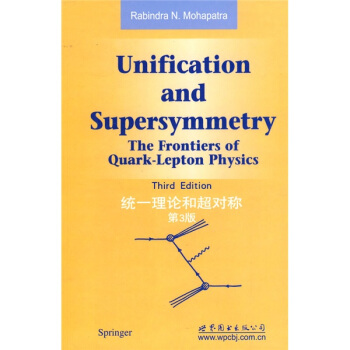
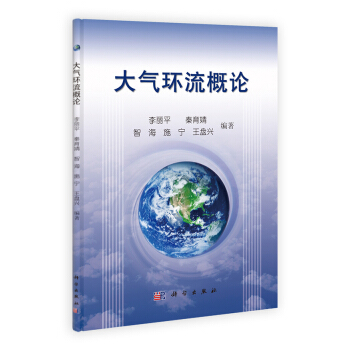
![中外物理学精品书系·引进系列(19):受控核聚变中的等离子体与材料的相互作用(影印版) [Plasma-Material Interaction in Controlled Fusion] pdf epub mobi 电子书 下载](https://pic.windowsfront.com/11300129/rBEhWFIUU-wIAAAAAAMp7O9ZpJwAACR6ACWhdoAAyoE577.jpg)
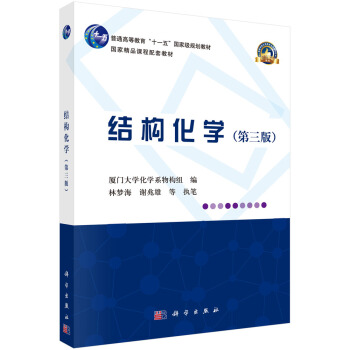
![椭圆曲线的有理点 [Rational Points on Elliptic Curves] pdf epub mobi 电子书 下载](https://pic.windowsfront.com/11647744/54e1b516Nc907b294.jpg)
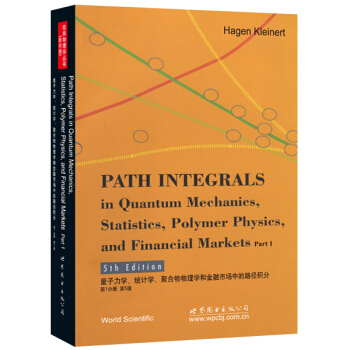
![量子群入门 [A Guide to Quantum Groups] pdf epub mobi 电子书 下载](https://pic.windowsfront.com/10184614/52569431-fb1f-4b41-9463-fd47031ffa99.jpg)
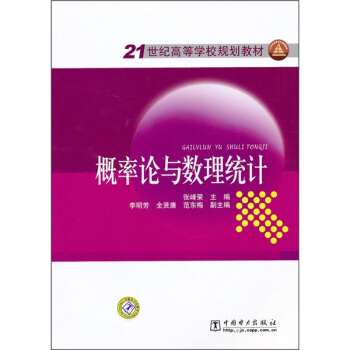
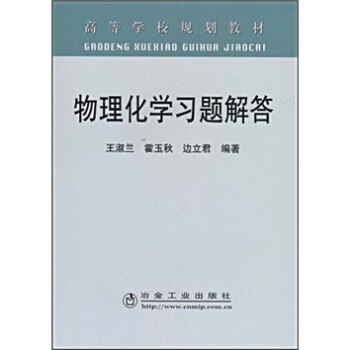
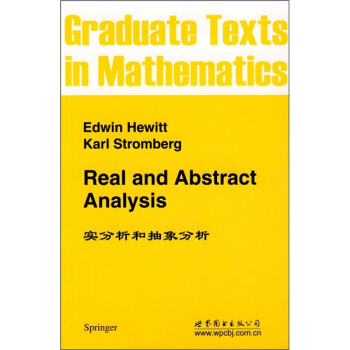
![线性代数群 [Linear Algebraic Groups] pdf epub mobi 电子书 下载](https://pic.windowsfront.com/10857737/fcb2f257-227e-43db-bed7-c73076c42824.jpg)
![经典物理学丛书(影印版):简明统计力学 [Statistical Mechanics in a Nutshell] pdf epub mobi 电子书 下载](https://pic.windowsfront.com/11316302/rBEhU1I4U_oIAAAAAAI69WH8VOoAADQsAOJkQ4AAjsN983.jpg)
![初等数列研究与欣赏(上) [Primary Sequence Study and Appreciation] pdf epub mobi 电子书 下载](https://pic.windowsfront.com/11879285/56e7d759Nb9bfd2cf.jpg)
![除尘工程技术手册 [Handbook on Dust Removal Engineering Techology] pdf epub mobi 电子书 下载](https://pic.windowsfront.com/11920147/5739c28cNcdf78f19.jpg)
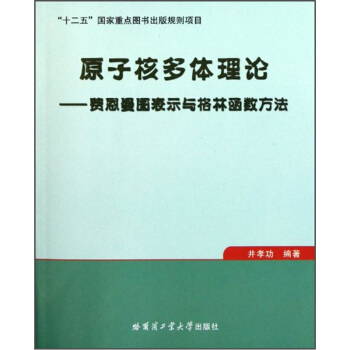
![紧复曲面(第2版) [Compact Complex Surfaces(Second Enlarged Edition)] pdf epub mobi 电子书 下载](https://pic.windowsfront.com/10904479/29188fd0-2c57-4e1e-8b2f-1f3d4b31bce4.jpg)
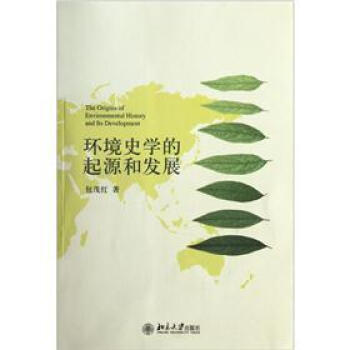
![化归与归纳·类比 联想(珍藏版) [Reduction And Induction Analogy Association] pdf epub mobi 电子书 下载](https://pic.windowsfront.com/11883761/56f8fee3Nc9f86c4f.jpg)
![超对称和弦论(英文版) [Supersymmetry and String Theory] pdf epub mobi 电子书 下载](https://pic.windowsfront.com/10184594/e5b89bc9-3b3b-4fad-8861-ede9b682c51f.jpg)
